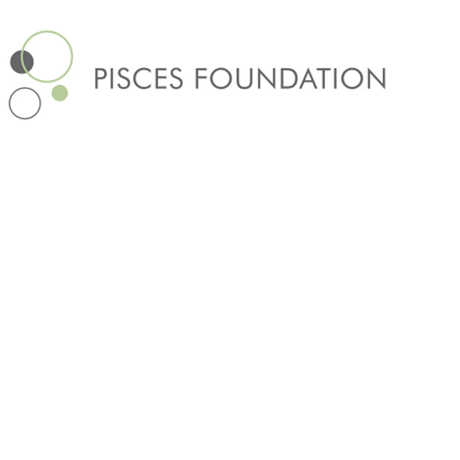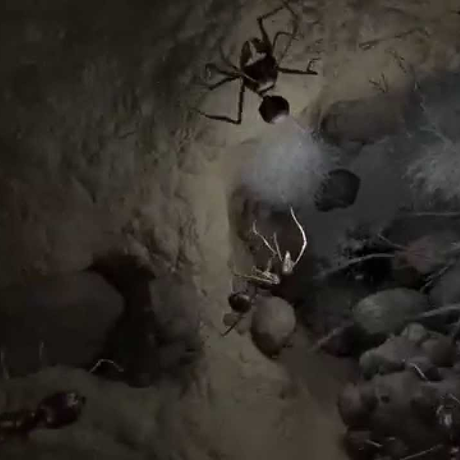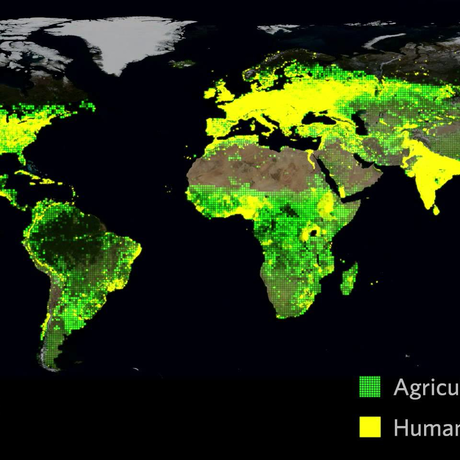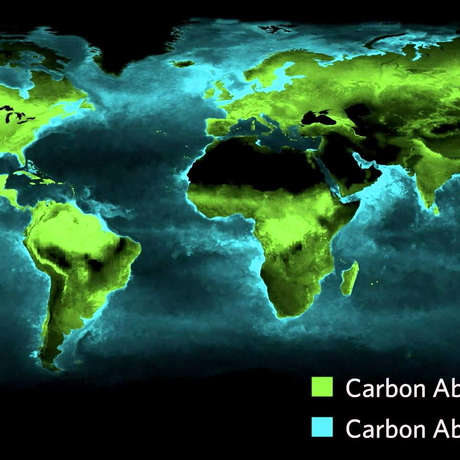Browse a rich array of educational resources from the award-winning show, Habitat Earth.
Step inside the trunk of a tree to follow the path water takes from the deepest roots to the very top of a Douglas fir.
Guiding Questions
- What path does this water droplet take to get from the soil to the clouds?
- Reflecting on the anatomy of a tree from the roots to the leaves, what parts do you notice? What parts did you travel through directly?
- What are the strengths of this video in terms of accurately displaying scientific content? What are some limitations?
Related Investigation: Stomata Printing (grades 3-12)

Plants have many crucial roles on our planet, and among these is the gas exchange that happens within their leaves. As plants take in carbon dioxide from our atmosphere, they release oxygen and retain the carbon. In this lesson, students will investigate leaves up close to look for the structures responsible for gas exchange.
Related Modeling Activity: Amazon Water Cycle (grades 4-8)

Transpiration in the rainforest helps keep the forest cool, and water vapor can collect into clouds and eventually fall as rain. In this fun role-playing skit your students will be able to describe the various processes of the water cycle in the Amazon, understanding that this cycle runs continuously with different processes happening at the same time.
Related Systems Unit: The Carbon Cycle (grades 4-8)
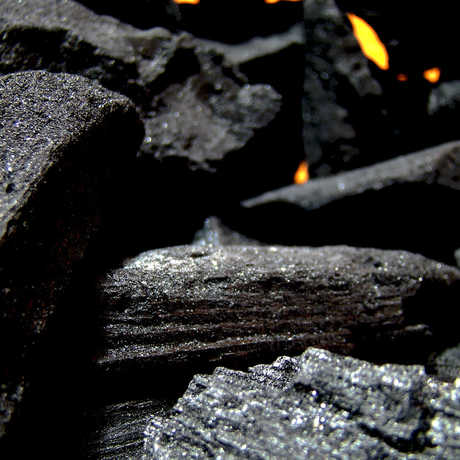
What kinds of everyday objects contain carbon? This introductory activity will help your students recognize where carbon is found, and will start you thinking about how it cycles through the environment. Then, run the Carbon Cycle Role-play and illustrate how carbon flows through the system with the Carbon Cycle Poster lesson.
Vocabulary for Students
- phloem: tissues in a tree that transport food made in the tree's leaves to other parts of the tree
- photosynthesis: the process by which plants use carbon dioxide and energy from the sun to build sugar
- stomata: small openings through which gas exchange occur
- transpiration: the process of giving off vapor containing water and waste products, especially through the stomata on leaves
- xylem: tissues in a tree that transport water and nutrients from the roots of the tree to its leaves
Connections to Standards
Next Generation Science Standards Disciplinary Core Ideas
- PS3.D: Energy in Chemical Processes and Everyday Life
- (5) The energy released [from] food was once energy from the sun that was captured by plants in the chemical process that forms plant matter (from air and water).
- (6-8) The chemical reaction by which plants produce complex food molecules (sugars) requires an energy input (i.e., from sunlight) to occur.
- LS1.A: Structure and Function
- (4) Plants and animals have both internal and external structures that serve various functions in growth, survival, behavior, and reproduction.
- (6-8) In multicellular organisms, the body is a system of multiple interacting subsystems. These subsystems are groups of cells that work together to form tissues and organs that are specialized for particular body functions.
- (9-12) Systems of specialized cells within organisms help them perform the essential functions of life.
- LS1.C: Organization for Matter and Energy Flow in Organisms
- (5) Plants acquire their material for growth chiefly from air and water.
- (6-8) Plants, algae (including phytoplankton), and many microorganisms use the energy from light to make sugars (food) from carbon dioxide from the atmosphere and water through the process of photosynthesis, which also releases oxygen. These sugars can be used immediately or stored for growth or later use.
- (9-12) The process of photosynthesis converts light energy to stored chemical energy by converting carbon dioxide plus water into sugars plus oxygen.
- LS2.B: Cycles of Matter and Energy Transfer in Ecosystems
- (5) Matter cycles between the air and soil and among plants, animals, and microbes as these organisms live and die. Organisms obtain gases, and water, from the environment, and release waste matter (gas, liquid, or solid) back into the environment.
- (9-12) Photosynthesis and cellular respiration (including anaerobic processes) provide most of the energy for life processes.
- ESS2.D: Weather and Climate
- (6-8) Weather and climate are influenced by interactions involving sunlight, the ocean, the atmosphere, ice, landforms, and living things.
- (6-8) Weather and climate are influenced by interactions involving sunlight, the ocean, the atmosphere, ice, landforms, and living things.
- ESS2.C: The Roles of Water in Earth's Surface Processes
- (6-8) Water continually cycles among land, ocean, and atmosphere via transpiration, evaporation, condensation and crystallization, and precipitation.
California's Environmental Principles and Concepts
- Principle III: Natural systems proceed through cycles that humans depend upon, benefit from, and can alter.
- Concept a: Students need to know that natural systems proceed through cycles and processes that are required for their functioning.
How Have Teachers Used this Video Clip?
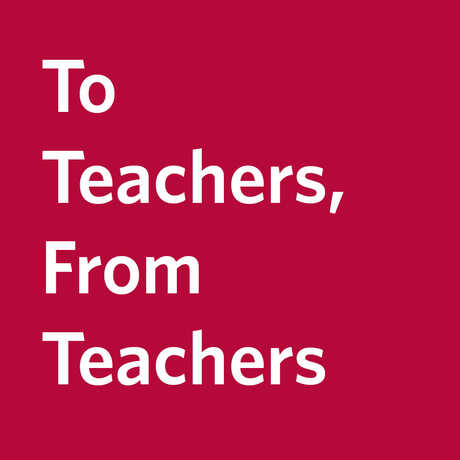
"We have just finished studying living systems, so I plan to use the video to complement that. But I think it will also form a nice bridge into our study of water and how important water [is] as part of our systems on Earth." -3rd-5th Grade Earth and Life Science Teacher from San Rafael, CA
"I would love to use some of the videos and guiding questions as a way to provide connections to real-world phenomenon." -High School Life and Physical Science Student Teacher from Berkeley, CA
"All things in life are connected. I plan to show these videos and make connections to weather systems, water cycle, colonial and explorer lessons, environmental issues, and plant structures." -3rd-5th Grade Science Teacher from San Rafael, CA
Have an idea you'd like us to post on this page? Email us.
Visualizations based on aggregated data provide the unique opportunity to engage your students in various Science Practices highlighted in the Next Generation Science Standards, including asking questions, analyzing and interpreting data, and constructing explanations. As an example, Academy educators developed sample activities such as this one and this one.
Recommended Resources
Improving Photosynthesis
Cutting-edge research is trying to improve upon the photosynthetic process to solve future global issues like food shortages and cleaner, renewable fuels.
Photosynthesis Colors
How does chlorophyll work? And why do different varieties of the pigment absorb different wavelengths?
Rainforest Makes Rain
As much as we know about the Amazon water cycle, scientists are exploring further how it works. Two recent studies provide more evidence as to why deforestation in that region can be so devastating.
Trees Can Only Grow So Tall
Just like people, leaves do not grow indefinitely. Once they reach a given size, they stop growing. But why? Researchers have recently determined the cause.
Big Trees, Great Benefits
We used to think that large, old trees were less productive than their younger counterparts. But scientists determined that for most species, the biggest trees both increase their growth rates and sequester more carbon as they age.
Trees’ Bleak Future
The world’s trees are facing serious challenges as the climate warms, especially in the Southwestern United States.
Data Sources
River and Stream Data
U.S. Geological Survey
California Land Cover Spatial Data
U.S. Department of the Interior National Gap Analysis Program
Share This
Our collection of educational videos will help your students visualize data and understand scientific concepts.
Environmental Literacy Initiative, major funding provided by
